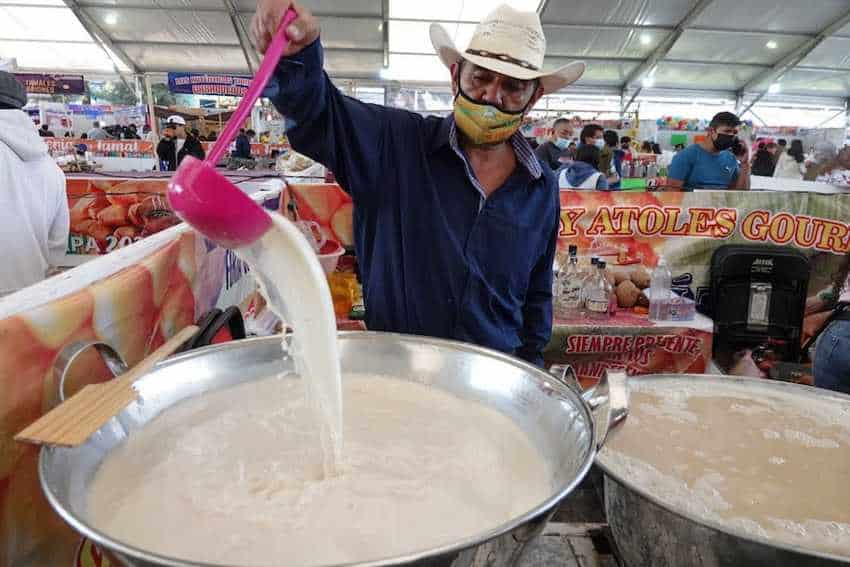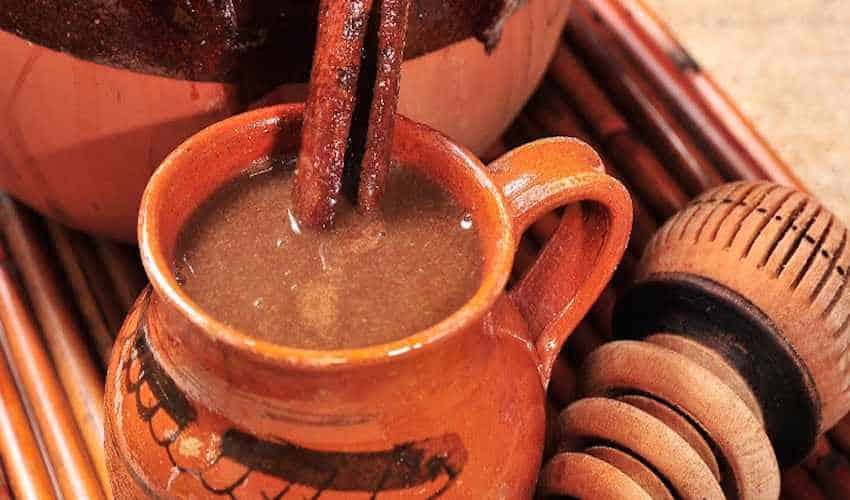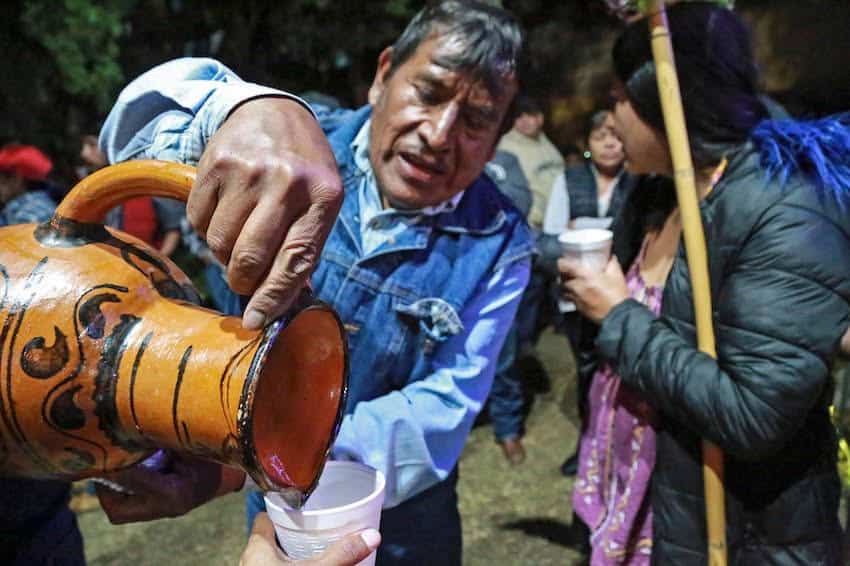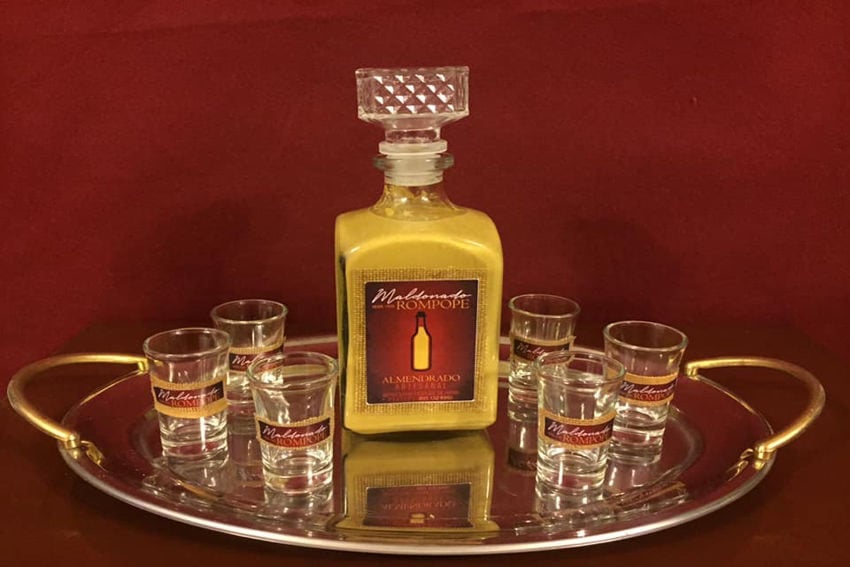“Tamales oaxaqueños, tamales calientitos.” That’s the anthem Mexico sings with the arrival of the chilly weather, and Mexico City is no exception. In the nation’s capital, misty dawns and soft, cold morning breezes are now a daily occurrence. What better way to greet the chilly season than with drinks that’ll warm you, body and soul?
Here’s our list of what we think are the best traditional Mexican warm drinks of the season — and some of the best places to find them in Mexico City.

Atole
Mexican grandmothers everywhere know that rice atole is the cure for an upset belly. It has long been a classic remedy for everything from stomach ailments to a serious hangover.
In addition to being part of ancient folk wisdom, atole is a favorite warming beverage for Mexicans on foggy November mornings. You can find it in every flavor, from strawberry to guava — on the sweeter side — to chile atole, a saltier version made with chiles and corn.
Get up early enough just about anywhere in Mexico, and you’ll find locals stopping at their favorite downtown street vendor on their way to pick up an atole — and maybe a tamal — as their breakfast on the go. Or, if you’re lucky enough, a man on a bike will ride near your home early in the morning with a big barrel full of atole in the seasonal flavor of their choice. Then you can have the ultimate cozy experience as you sip it at home, while watching an even cozier movie. You can thank me later.
Champurrado

Champurrado is a specific kind of atole — the best kind, actually. Typically served in a small pewter or clay mug, this drink is a must for those who want the full seasonal experience.
Described by Mexico’s Agriculture and Rural Development Ministry as “very delicious and nutritious,” this warm winter drink is a mixture of masa harina and chocolate. In some states, such as Oaxaca, champurrado is prepared with water. However, in Mexico City, it’s typically prepared with milk.
While you can usually find champurrado at any street tamal stand early in the morning, vendors also sell it at night, around dinnertime — which in Mexico is around 8 p.m., — and early in the morning, as a heart-warming breakfast for busy passersby.
Café de olla

Unlike the classic (and somewhat boring by comparison) black coffee, this Mexican coffee delicacy is prepared in a clay pot. During the brewing process, piloncillo is added. Even if you’re accustomed to taking your coffee with milk or cream, don’t add it to cafe de olla; it’s practically sacrilege, and it’ll spoil the taste anyway. And you don’t need it; unlike regular black coffee, cafe de olla is not at all bitter. It has a homey flavor that just feels ideal for Mexico City’s cold season.
If you’re an early bird like me, you should totally plan a morning visit to Coyoacán’s iconic Mercado de Antojitos, right in the heart of the borough’s colonial area. No one prepares café de olla better than the merchants there. You can enjoy yours with a classic concha de nata or a fantastic, sweet tamal dulce.
Rompope

Originally from 17th-century Puebla city, rompope is one of the best traditional warm drinks to enjoy as the year draws to a close. According to the federal consumer agency Profeco, rompope comes in just after mezcal and sotol as Mexico’s favorite traditional alcoholic beverage.
This drink can be enjoyed as an aperitif or, depending on the custom of each household, even as a dessert, because it is sweet and can be made in various flavors. Around this time of year, people at social events often take it warm just before dinner, a bit like a before-dinner cocktail.
While the classic version of rompope — which is not unlike eggnog, but thicker — is available in most liquor stores and supermarkets, you can find more adventurous flavors at your closest local mercado, where they’ll add things like pine nuts, coffee, strawberries or pistachios. If you’re into tastings, you can head straight to the Roma/Condesa area in Mexico City and have several samples at Alakazam, a chic spot for signature cuisine and cocktails.
Ponche

Featuring tamarind, piloncillo, guava, cinnamon, plum, tejocote and hibiscus flower, Mexican ponche is a perfect representation of the nation’s biodiversity. Although fruit punch is a traditional drink made for Christmas Day, these days, you can find it at any food vendor’s stand by early November.
This warm seasonal drink is usually enjoyed in a tiny clay mug. However, if you’re buying yours on the street, the vendor will probably offer you a Styrofoam cup.
If eating in the street is not exactly your thing, try ponche at any Sanborns store. Given that Mexicans are eating pan de muerto all year long nowadays, feel free to enjoy your traditional ponche with a piece of that wonderfully fluffy seasonal bread this November!
Andrea Fischer contributes to the features desk at Mexico News Daily. She has edited and written for National Geographic en Español and Muy Interesante México, and continues to be an advocate for anything that screams science. Or yoga. Or both.
